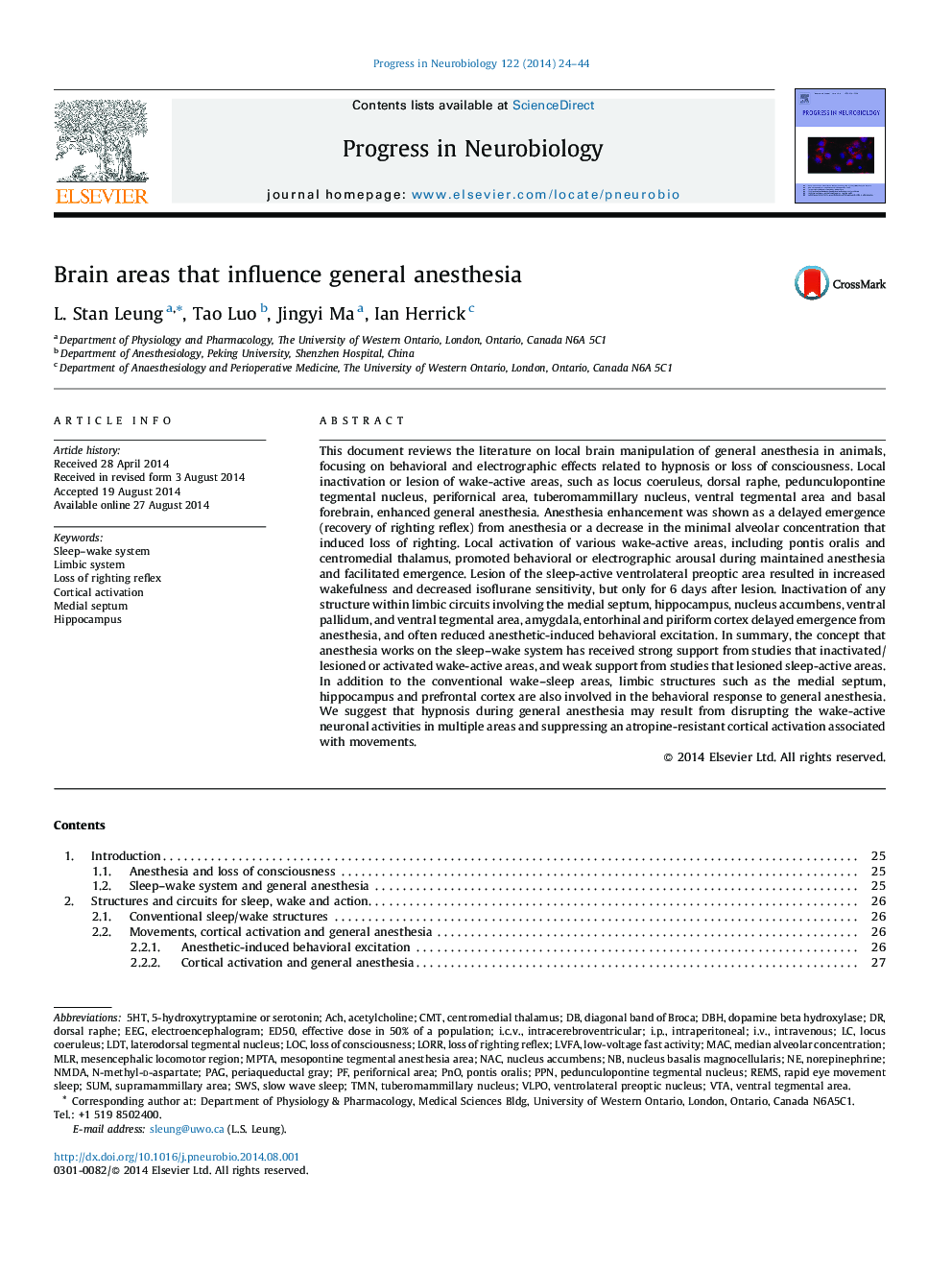| کد مقاله | کد نشریه | سال انتشار | مقاله انگلیسی | نسخه تمام متن |
|---|---|---|---|---|
| 4353338 | 1615388 | 2014 | 21 صفحه PDF | دانلود رایگان |
• Loss of righting reflex in animals measures hypnotic effects of general anesthetics.
• Inactivation or lesion of wake/arousal active brain areas enhances general anesthesia.
• Stimulation of wake-active brain areas reduces general anesthesia effects.
• Inactivation or lesion of the limbic system enhances general anesthesia effects.
• Septum and hippocampus are involved in behavioral excitation by general anesthetics.
This document reviews the literature on local brain manipulation of general anesthesia in animals, focusing on behavioral and electrographic effects related to hypnosis or loss of consciousness. Local inactivation or lesion of wake-active areas, such as locus coeruleus, dorsal raphe, pedunculopontine tegmental nucleus, perifornical area, tuberomammillary nucleus, ventral tegmental area and basal forebrain, enhanced general anesthesia. Anesthesia enhancement was shown as a delayed emergence (recovery of righting reflex) from anesthesia or a decrease in the minimal alveolar concentration that induced loss of righting. Local activation of various wake-active areas, including pontis oralis and centromedial thalamus, promoted behavioral or electrographic arousal during maintained anesthesia and facilitated emergence. Lesion of the sleep-active ventrolateral preoptic area resulted in increased wakefulness and decreased isoflurane sensitivity, but only for 6 days after lesion. Inactivation of any structure within limbic circuits involving the medial septum, hippocampus, nucleus accumbens, ventral pallidum, and ventral tegmental area, amygdala, entorhinal and piriform cortex delayed emergence from anesthesia, and often reduced anesthetic-induced behavioral excitation. In summary, the concept that anesthesia works on the sleep–wake system has received strong support from studies that inactivated/lesioned or activated wake-active areas, and weak support from studies that lesioned sleep-active areas. In addition to the conventional wake–sleep areas, limbic structures such as the medial septum, hippocampus and prefrontal cortex are also involved in the behavioral response to general anesthesia. We suggest that hypnosis during general anesthesia may result from disrupting the wake-active neuronal activities in multiple areas and suppressing an atropine-resistant cortical activation associated with movements.
Journal: Progress in Neurobiology - Volume 122, November 2014, Pages 24–44
